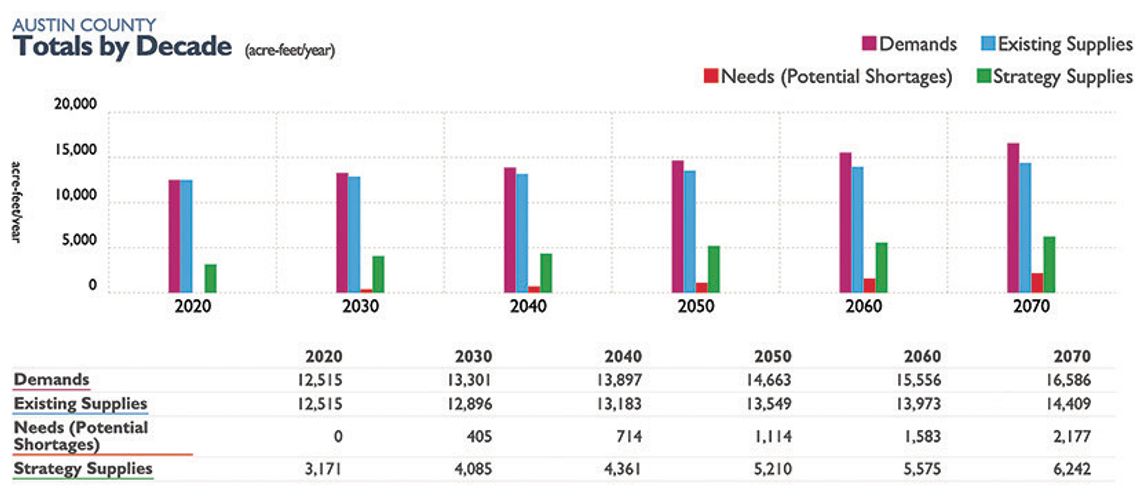Data compiled in the state’s 2022 water plan from the Texas Water Development Board estimates the state’s water supply is projected to decrease by approximately 18% by 2070 as the state’s population increases by 73%. Also, one estimate shows that the state’s municipal supply will not meet demand by 2030. Basically, Texas’ water supply can’t keep up with the state’s population growth and droughts, overuse and changing rainfall patterns that are leading to water becoming a scarce resource.
What else has led to this? The increasing demand for water due to population growth has been exacerbated by the state’s aging water infrastructure. Two lawmakers have filed constitutional amend ments that if approved by voters would dedicate $1 billion annually for up to 10 years for water projects.
Where does Texas get its water from? Texas relies on two main water sources: groundwater (54%) stored in underground aquifers and surface water (43%) from lakes, rivers and reservoirs. Texas has nine major aquifers and 22 minor ones. Overuse is rapidly depleting water from the Ogallala Aquifer underneath the Panhandle and West Texas, which Texas shares with seven other states. The state also gets water from 15 major river basins and eight coastal basins, lakes and more than 180 reservoirs.
Who owns Texas’ water and who governs it? Water is a highly managed resource in Texas. If you own land above an aquifer in Texas you own the groundwater beneath it. However there are stipulations around how much of that groundwater you use.
“We have to let landowners use their water,” says Ty Edwards, general manager of the Middle Pecos Groundwater Conservation District. “But we also have to protect everyone else’s wells. It’s a juggling act.”
Surface water belongs to the state. To use it, such as for cities, farms, or businesses, you need a permit from the state’s environmental agency, the Texas Commission on Environmental Quality. The state also has two separate legal systems for water.
Visit www.texasstatewaterplan.
org to see where your area falls in water supply and future projections by region or county.



